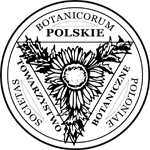Abstract
Sooty canker, caused by Neoscytalidium dimidiatum (Penz.) Crous and Slippers, Synon. = Nattrassia mangiferae (Syd. and P. Syd.) B. Sutton and Dyko, on the inoculated thin bark saplings (12-24 months old) of Eucalyptus camaldulensis, Olea europaea, and Populus nigra was monitored under greenhouse conditions every 2 days until the 8th day, and it was repeated 18, 28, 58 days after inoculation. Predisposition to stem cankers depended on the duration of warm temperature and abundance of fungal inoculum. The infected bark was discolored and revealed a black mass of fungal arthroconidia, particularly on the most susceptible plants of eucalyptus and poplar. The cankers extended to 18.53 mm and 16.11 mm on eucalyptus and poplar, respectively, after 58 days compared to 10 mm for non-inoculated saplings (wounding sites) of control treatment. The effect of temperature conditions before and after inoculation with N. dimidiatum on canker development on the same plants was studied in a growth chamber with two temperature regimes, very hot 40oC and hot 32oC. Among pre-inoculation regimes, very hot and hot temperatures were the most conductive to infection of eucalyptus saplings compared to other hosts, which showed a non-significant dependence between pre- and post-inoculation. Thus, heat stress of 32 and 40oC on the most susceptible host, eucalyptus, sustained the progress of cankers to 17.20-17.56 mm after 3 days and 18.08-18.06 mm after 5 days of inoculation.
Keywords
sooty canker; heat stress; Neoscytalidium dimidiatum






